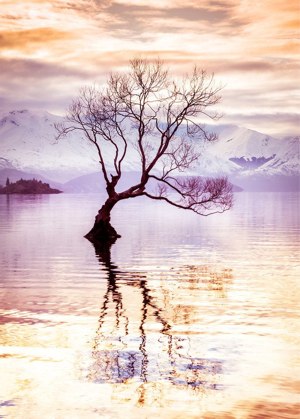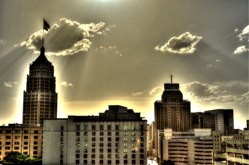 |
| This HDR-rendered photo was made by Trey Radcliff, one of the preeminent HDR photo artists. His blog is Stuck in Customs. |
Several of my friends on Facebook have asked me to explain HDR. Since any attempt would exceed 140 characters and the typical Facebook status post, I thought I would post it here.
I should insert that the author is not engaged in rendering legal, accounting, or medical advice. If legal advice or other expert assistance is required, the services of a competent professional person should be sought. 😉
I am also not a professional photographer. The following description reflects my knowledge of HDR, as I understand it right now. As an amateur photographer, I am learning, as much and as quickly as I can. I only have so many years left to make the best picture that I can.
First off, there is a concept about photography today that has been repeated to me several times recently. Taking a picture is different from making a picture. Taking a picture is simply capturing an image as accurately as the camera is capable. Making a picture involves a whole lot more. It uses the camera and other devices, both hardware and software, to capture not only the image, but also what inspired the taking of the image — and sometimes adding to the image in order to inspire further reactions.
First, HDR solves a problem. The human eye can register a limited range of light frequency — color. Cameras can register even less. It can not match what the eye sees. This is one reason why so many pictures end out being less dramatic than the subject being photographed.
Enter HDR, which stands for High Dynamic Range. It works like this. Many cameras have a feature called bracketing. When switched on, the camera takes three (usually) photographs of the subject, at three different exposures. One photo will be dark, one light and the third pretty close to the exposure your camera would take normally. Many cameras will allow the photographer to set the degree of separation between exposures. I usually divided mine by 2.0 fStops. Don’t worry about knowing what an fStop is.
 |
 |
 |
| -2.0 fStops | 0 fStops | +2.0 fStops |
To process the HDR requires special software. I’ve started using Photomatix, which is fairly high end – but not really all than much better than HDRtist Pro, which is much less expensive. The software looks at each of the exposures and brings out the best that that exposure offers, combines them into a single photograph. The result is a picture that more closely matches what the eye of the photographer saw.
 |
| HDR rendered photo. Click the photo to see an enlarged version on Flickr. |
I heard someone recently say that HDR enables the photographer to capture more closely, what it was that inspired him to take the picture. Better contrast. Colors that pop.
Since the software can identify and exaggerate different elements of three different photos, the photographer can alter how the elements are presented and blended, resulting in photos that are more surreal. There is a good deal of artistry possible, though many push this too far, for the sake of a cool picture — myself included. These are frowned upon by accomplished photo artists, as artists are prone to do.
 |
| This photo was taken outside my hotel window in San Antonio last week. I pushed the software to produce an image that exaggerated what the eye was seeing. |
About half of my HDR photos were made with a Nikon D5100 (bought it used). I usually have it on a tripod when taking an HDR, because it is crucial that each of the three photos be as close to the same framing as the others. I have had success at making HDRs without a tripod, but just as often not.
on my iPhone, I use an app called Pro HDR. It allows me to select the lightest part of the subject and the darkest, and then it takes two photos at two exposures Pro HDR does a pretty darn good job of blending the two into a satisfying photograph. But for the best and highest resolution photos, I use the Nikon. Again, it’s good to have your iPhone on a tripod, but I also get satisfactory results without it.
Many cameras come with HDR switches. Both my Nikon and my iPhone have them. But the cameras take care of everything for you, leaving the photographer with no control — no artistry. There are also apps out there take a standard photo and exaggerate elements to simulate the HDR effect. This is cheating, in my opinion.
But what ever gives you satisfaction.
It’s why we make pictures.

David, Thanks so much for this GREAT explanation in lay person’s terms! Your not being a professional photographer served me well in this case. Have a great day! Cyndi
David – I love this picture and how you see things that no one else can imagine. It was great seeing you at San Antonio.
Barbara